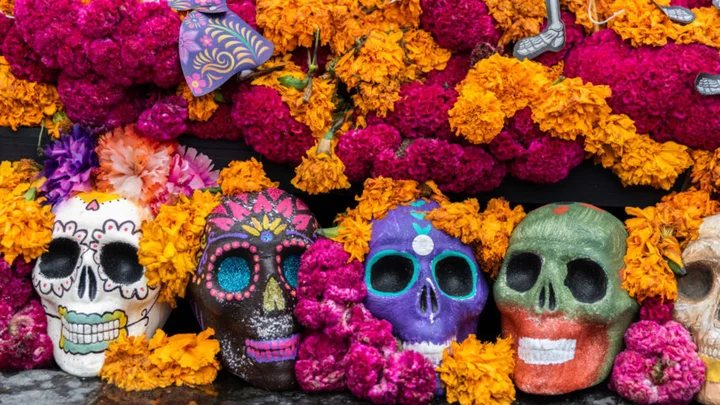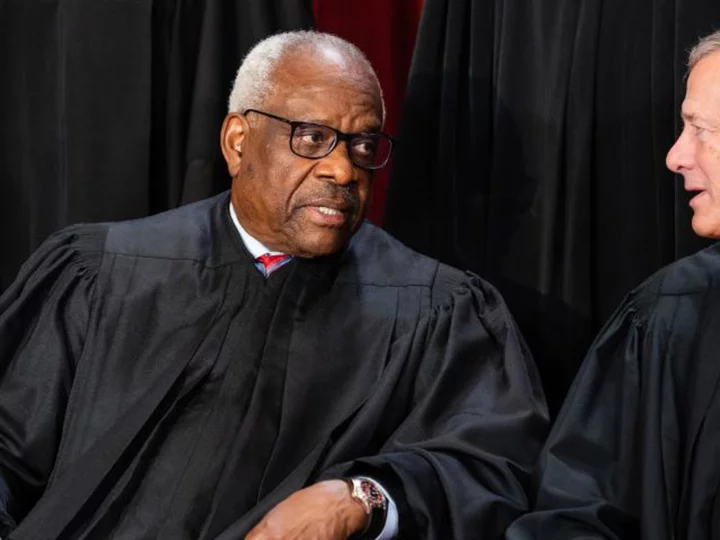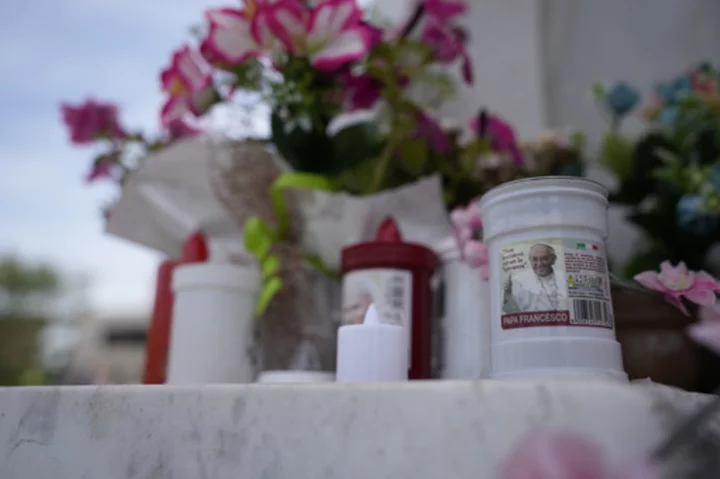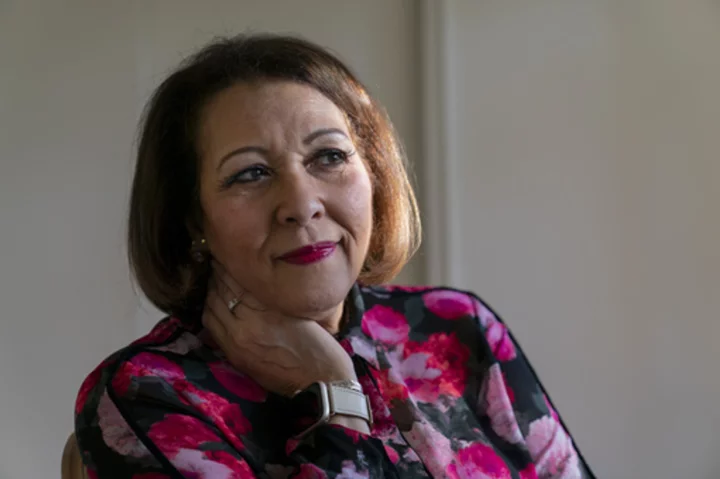Death is a part of everyone’s life. There are myriad ways to cope with the loss of a loved one, but in Latin America, el Día de los Muertos (or the Day of the Dead) is much more than that. It’s a celebration of life, death, and an invitation for the deceased to return home once again to those who love them on Earth. Learn more about the Mexican holiday of Día de los Muertos with these interesting facts.
1. Día de los Muertos is a Mexican celebration inspired by Indigenous and Spanish customs.
Over 3000 years ago, Indigenous groups in present-day Mexico like the Aztecs held rituals with food and offerings to honor the dead and their journey to a final resting place. In medieval Europe, similar traditions were common in Spain to guide the dead souls back to the living world. It was through the fusion of customs from pre-Columbian Mexico and Europe that this festivity was created to invoke a visit from the departed through altars, offerings, and celebrations.
2. Día de los Muertos is a two-day celebration.
According to the Catholic calendar, November 1 is recognized as All Saints Day, a religious holiday during which many Roman Catholics and Christians celebrate all saints in heaven. Departed children are commemorated on this day. A popular belief among people who celebrate Día de los Muertos is that deceased children and infants are the first to complete their trip home. Adults who have passed are honored the following day on All Souls Day.
3. Día de los Muertos is celebrated in the U.S., Mexico, and Latin America.
Over the years, Día de los Muertos and renditions of it have transcended geographic borders, eventually making their way from Mexico and other Latin American countries to the United States. Each region has its own customs and special take on the holiday. In Guatemala, enormous kites soar over the sky in reference to the ancient belief that the flying objects of art represented the merging of the underworld and the world of the living.
4. Altars and offerings are used to honor dead loved ones on Día de los Muertos.
From papel picado (art made from tissue paper) to sugar calaveras, or skulls, the Day of the Dead is famous for the elaborate altars that people create to receive the dead after their arduous journey back to Earth. Often multi-tiered and colorful, these structures hold items special to the departed including their favorite foods, toys, photos, flowers, and more. Tamales, water, candles, and even tequila are often among these offerings. Who said the dead can’t have a drink or two?
5. Families often leave food for the dead.
Spirits can work up pretty big appetites as they roam the afterlife. Pan de muerto, or bread of the dead, is a type of sweet bread that families often leave out as an offering during Día de los Muertos for their dearly departed. How this treat is made can vary depending on the region, but it is often round (representing the circle of life) and coated in sugar; some pieces may also be shaped like bones and/or skulls. Some families may also opt to forgo it in favor of leaving their dead loved one’s favorite food on the altar.
6. Día de los Muertos is recognized by UNESCO.
In 2008, UNESCO recognized the holiday’s massive importance among Mexico’s Indigenous communities by adding it to its list of Intangible Cultural Heritage of Humanity. It is the first Mexican cultural practice to be recognized. On the org’s website, the holiday is described as a union of two universes, “one marked by Indigenous belief systems, the other worldviews introduced by the Europeans in the 16th century.”
7. Cempasúchil is the “flower of the dead.”
Cempasúchil marigold flowers are used to decorate altars and cemeteries during these fall celebrations. People used the often-expensive flowers in traditional medicine and in ancient funerary rituals, as it was believed the orange and yellow petals held the sun’s heat and worked to protect the dead. In Mexico, these flower petals are dispersed around the altar, creating a trail illuminated by candles to help guide souls so they don’t get lost on their travels back home.
8. Unique scents are used to lure in the dead.
It’s no surprise that our sense of smell can help us revisit past memories, but did you know it can invite a visit from the dead, too? While cempasúchil flowers and copal incense are used to create a path for the dead, it’s believed that the scent of the incense is what actually attracts the dead [PDF]. Some even argue that when burned together, the flowers and incense give off a smell similar to that of bones.
9. Calaveras (or skulls) are an iconic symbol of Día de los Muertos.
As a way to poke fun at the politics in Mexico, printmaker Jose Guadalupe Posada created a zinc etching titled La Calavera Catrina, or the Elegant Skull, in 1910. The female skeleton is dressed in a fancy hat and dress, her skin covered in white makeup, features meant to mask her cultural heritage. Posada's satirical work became a symbol of this holiday, where different skulls, from sugar to ceramic, are now used as an artistic form to celebrate death.
10. Día de los Muertos is a part of Chicanx culture.
In 1972, public celebrations of Día de los Muertos made their way to Los Angeles and San Francisco, most notably in Chicano communities. The festivities were then celebrated in Sacramento and San Diego, as a result of the Chicano movement for civil rights. The altar-making festivities these groups adopted not only became a way to honor the dead and ancestors but a method of raising awareness about the deaths due to sociopolitical injustices affecting Chicanos.
11. Día de los Muertos is a happy celebration for the living and the dead.
Instead of mourning the death of loved ones, Día de los Muertos was created as a healthy way of coping with the loss. The vibrant colors, flowers, food, and lively festivities are intended to honor the departed with joy. Rather than equating death with sadness, this two-day holiday is supposed to help the living embrace death and accept it and the visiting souls, with open arms.
12. Día de los Muertos has been integrated into American culture as the Day of the Dead.
While the occasion traces its roots to Mexico, it has made an appearance in American pop culture recently. In 2015, the James Bond Spectre film featured scenes of a Día de los Muertos parade, which later inspired cities like Los Angeles and Chicago to host their own celebrations (the film also inspired Mexico City to hold its first Día de los Muertos parade). In 2017, Disney and Pixar paid tribute to the Mexican holiday with the animated kid’s movie Coco, which tells the story of a boy who visits the Land of the Dead.
A version of this article was originally published in 2021 and has been updated for 2023.
This article was originally published on www.mentalfloss.com as 12 Facts About Día de los Muertos.









